Hyundai IONIQ 6 vs Mercedes EQA – Performance, range & efficiency compared
Everyday use, family trips or long-distance drives – here’s where the differences show.
Discover whether Hyundai IONIQ 6 or Mercedes EQA fits your lifestyle better.
Costs and Efficiency:
When it comes to price and running costs, the biggest differences usually appear. This is often where you see which car fits your budget better in the long run.
Hyundai IONIQ 6 has a somewhat advantage in terms of price – it starts at 37600 £, while the Mercedes EQA costs 44200 £. That’s a price difference of around 6609 £.
In terms of energy consumption, the advantage goes to the Hyundai IONIQ 6: with 13.90 kWh per 100 km, it’s hardly perceptible more efficient than the Mercedes EQA with 14.40 kWh. That’s a difference of about 0.50 kWh.
As for range, the Hyundai IONIQ 6 performs slight better – achieving up to 614 km, about 53 km more than the Mercedes EQA.
Engine and Performance:
Power, torque and acceleration say a lot about how a car feels on the road. This is where you see which model delivers more driving dynamics.
When it comes to engine power, the Hyundai IONIQ 6 has a clearly edge – offering 650 HP compared to 292 HP. That’s roughly 358 HP more horsepower.
In acceleration from 0 to 100 km/h, the Hyundai IONIQ 6 is convincingly quicker – completing the sprint in 3.20 s, while the Mercedes EQA takes 6 s. That’s about 2.80 s faster.
In terms of top speed, the Hyundai IONIQ 6 performs evident better – reaching 257 km/h, while the Mercedes EQA tops out at 160 km/h. The difference is around 97 km/h.
There’s also a difference in torque: Hyundai IONIQ 6 pulls clearly perceptible stronger with 770 Nm compared to 520 Nm. That’s about 250 Nm difference.
Space and Everyday Use:
Whether family car or daily driver – which one offers more room, flexibility and comfort?
Both vehicles offer seating for 5 people.
In curb weight, Hyundai IONIQ 6 is somewhat lighter – 1850 kg compared to 2045 kg. The difference is around 195 kg.
In terms of boot space, the Hyundai IONIQ 6 offers a bit more room – 401 L compared to 340 L. That’s a difference of about 61 L.
When it comes to payload, Hyundai IONIQ 6 slight takes the win – 430 kg compared to 425 kg. That’s a difference of about 5 kg.
Who wins the race?
The Hyundai IONIQ 6 proves to be outperforms in nearly all aspects and therefore becomes our DriveDuel Champion!
Hyundai IONIQ 6 is the better all-rounder in this comparison.
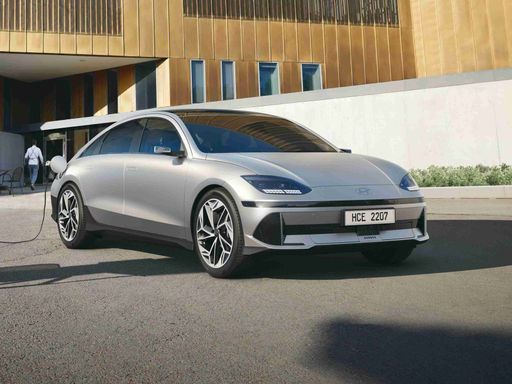
Hyundai IONIQ 6
Hyundai IONIQ 6
The Hyundai IONIQ 6 merges futuristic design with eco-friendly technology, offering a glimpse into the future of electric mobility. Its sleek silhouette and aerodynamic profile are sure to capture attention on the road, while the interior provides a seamless blend of comfort and cutting-edge digital features. With a focus on efficiency and sustainability, this model represents a significant step forward in the evolution of electric vehicles.
details @ hyundai.news
@ hyundai.news
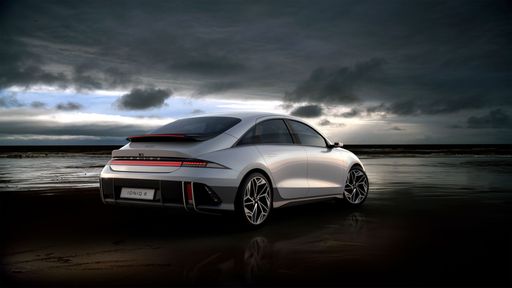 @ hyundai.news
@ hyundai.news
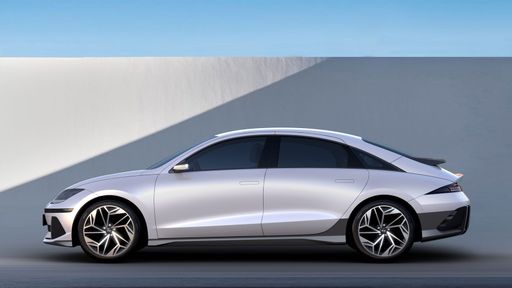 @ hyundai.news
@ hyundai.news
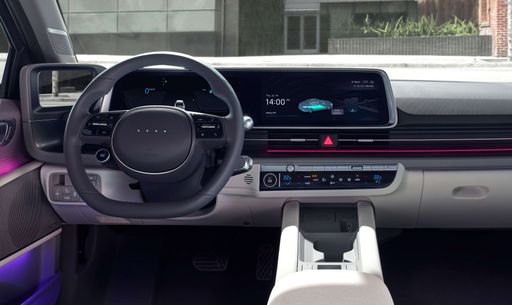 @ hyundai.news
@ hyundai.news
Mercedes EQA
The Mercedes-Benz EQA presents a refined blend of elegance and electric performance, perfectly suited for urban environments. Its sleek and modern design emphasises aerodynamic efficiency while providing a sumptuous interior that epitomises luxury and comfort. With advanced technology seamlessly integrated into its user-friendly interface, the EQA ensures a connected and enjoyable driving experience.
details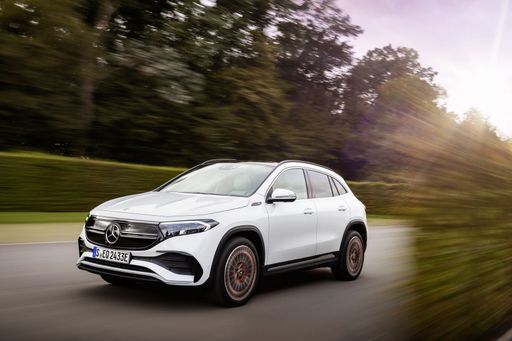 @ group-media.mercedes-benz.com
@ group-media.mercedes-benz.com
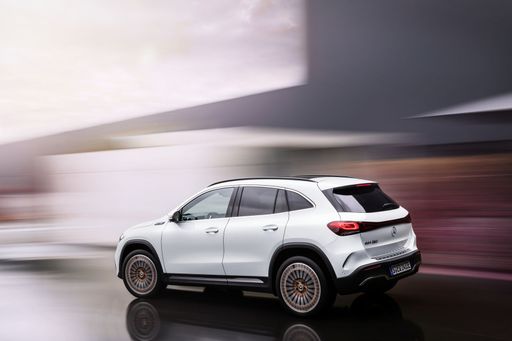 @ group-media.mercedes-benz.com
@ group-media.mercedes-benz.com
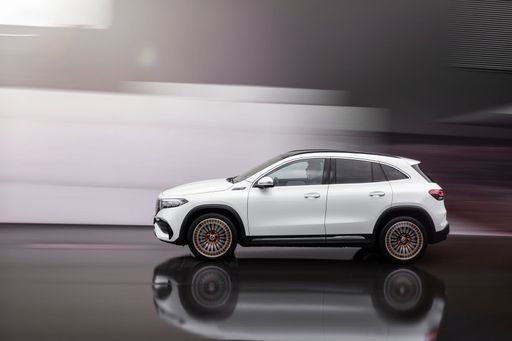 @ group-media.mercedes-benz.com
@ group-media.mercedes-benz.com
 @ group-media.mercedes-benz.com
@ group-media.mercedes-benz.com

|

|
|
|
|
Costs and Consumption |
|
|---|---|
|
Price
37600 - 64300 £
|
Price
44200 - 57400 £
|
|
Consumption L/100km
-
|
Consumption L/100km
-
|
|
Consumption kWh/100km
13.9 - 15.1 kWh
|
Consumption kWh/100km
14.4 - 16.9 kWh
|
|
Electric Range
429 - 614 km
|
Electric Range
476 - 561 km
|
|
Battery Capacity
53 - 84 kWh
|
Battery Capacity
70.50 kWh
|
|
co2
0 g/km
|
co2
0 g/km
|
|
Fuel tank capacity
-
|
Fuel tank capacity
-
|
Dimensions and Body |
|
|---|---|
|
Body Type
Hatchback
|
Body Type
SUV
|
|
Seats
5
|
Seats
5
|
|
Doors
4
|
Doors
5
|
|
Curb weight
1850 - 2095 kg
|
Curb weight
2045 - 2115 kg
|
|
Trunk capacity
401 L
|
Trunk capacity
340 L
|
|
Length
4855 - 4935 mm
|
Length
4463 mm
|
|
Width
1880 - 1940 mm
|
Width
1834 mm
|
|
Height
1495 mm
|
Height
1608 - 1613 mm
|
|
Max trunk capacity
-
|
Max trunk capacity
1320 L
|
|
Payload
425 - 430 kg
|
Payload
425 kg
|
Engine and Performance |
|
|---|---|
|
Engine Type
Electric
|
Engine Type
Electric
|
|
Transmission
Automatic
|
Transmission
Automatic
|
|
Transmission Detail
Reduction Gearbox
|
Transmission Detail
Reduction Gearbox
|
|
Drive Type
Rear-Wheel Drive, All-Wheel Drive
|
Drive Type
Front-Wheel Drive, All-Wheel Drive
|
|
Power HP
151 - 650 HP
|
Power HP
190 - 292 HP
|
|
Acceleration 0-100km/h
3.2 - 8.8 s
|
Acceleration 0-100km/h
6 - 8.6 s
|
|
Max Speed
185 - 257 km/h
|
Max Speed
160 km/h
|
|
Torque
350 - 770 Nm
|
Torque
385 - 520 Nm
|
|
Number of Cylinders
-
|
Number of Cylinders
-
|
|
Power kW
111 - 478 kW
|
Power kW
140 - 215 kW
|
|
Engine capacity
-
|
Engine capacity
-
|
General |
|
|---|---|
|
Model Year
2022 - 2025
|
Model Year
2024 - 2025
|
|
CO2 Efficiency Class
A
|
CO2 Efficiency Class
A
|
|
Brand
Hyundai
|
Brand
Mercedes-Benz
|
What drive types are available for the Hyundai IONIQ 6?
Available configurations include Rear-Wheel Drive or All-Wheel Drive.
The prices and data displayed are estimates based on German list prices and may vary by country. This information is not legally binding.
